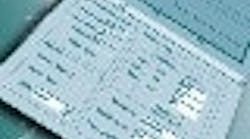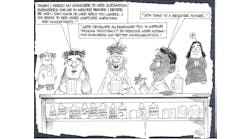Loop Controller Resources
Tuning Guides
How-to guides cover digital tuning, deadtime compensation, coarse/fine control, ratio control, compressor control, and other topics. Each describes the procedures and mathematics involved in tuning modern, digital controllers. Some are specific to the company’s products, while others just use the products as an example of how to tune. To view these documents, go to the Siemens website and click on "Procidia Control Solutions - 353, 353R, 353P." Siemens Energy & Automation; 215/646-7400 x2592; www.sea.siemens.com/ia
Oline Controller Selection Tool
This tool enables an engineer to enter temperature-loop controller requirements in the order of importance based on the application. Radio buttons and drop-down menus allow selection of various criteria such as thermocouple input type, control output, alarms, approval bodies, size, etc. The user is then presented with specific controllers that meet these criteria. Models can be compared for key attributes. To use the tool, go to the Honeywell website. Honeywell; www.honeywell.com
Controlling pH With PID
An application note on AN-320, "Overcoming the Challenges of pH Control," describes problems such as nonlinearity, long process deadtimes, and various disturbances that make controlling pH difficult. The note explains two common approaches that help PID controllers handle pH applications—linearization and gain scheduling. To obtain a copy, send an e-mail to [email protected]. Control Soft; 440/443-3900; www.controlsoftinc.com
Process Conrol Training Classes
Courses teach PID, cascade, feedforward, gain scheduling, and multiple PID override, as well as override control, long deadtime processes and interacting-loops theory and applications. Courses will be held in Tacoma/Seattle (August), Cleveland (September), Kansas City (October), Memphis (November) and Tampa and Boston (December). Control Soft; 440/443-3900; www.controlsoftinc.com
Tuning Tips Newsletter
“Loop Tips” newsletter and website offers discussions tips for loop devices and controller tuning. Subjects from recent newsletters include: “Do you always trust your flights to auto pilot?”; “Is something dead in your loop?”; “Do you understand your process?”; “The Sticky Wicket Valve”; and “Getting tired of trial and error tuning?” To view the tips, go to the Emerson website. Emerson Process Management; 800/338-8158; www.emersonprocess.com
Process Control Video Training
Courses consist of multiple units, each consisting of a 25-40 minute video tape, two corresponding student guides, and tests that can earn ECUs. Courses in controller tuning topics include Process Control Basics; Understanding Control Loops; Loop Tuning and Valve Considerations; PID and Cascade Control Basics; Feedforward Control Basics; Process Terminology and Behavior; Manual, Feedback and Cascade Control; Feedforward Control; Ratio Control and Other Control Considerations. For more info, Emerson Process Management; 800/338-8158; www.emersonprocess.com
| If you know of any tools and resources we didn’t include, send them to [email protected], and we’ll add them to the website. |



